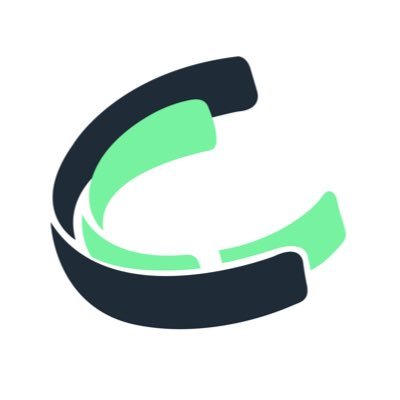If you already spend weekends at South Park pitch days or watch Demo Day streams at Stanford’s CoHo, you are close to the action but not yet shaping it. Fellowship programs based in the Bay Area can change that. They bolt a structured, résumé‑worthy venture apprenticeship onto your existing life—whether you are finishing an MBA, hacking on research in Redwood City, or scaling product at a Series B in SOMA. Below are the programs insiders mention most when asked, “How do I get real VC reps without quitting school or work?”
Haas Venture Fellows – UC Berkeley
The longest‑running university VC fellowship on the West Coast pulls 10‑to‑12 Berkeley MBA, EWMBA, and EMBA students each year. Fellows commit one academic year to three tracks: (1) hands‑on project work for Bay Area funds, (2) a public “VC Connect” pitch showcase, and (3) a private speaker series that has hosted partners from Sequoia and Lightspeed. Expect weekly deliverables that land directly in a partner’s inbox; alumni say the cadence mirrors an analyst’s first 90 days.
Threshold Venture Fellows (TVF) – Stanford
TVF is a six‑month, leadership‑heavy program for master’s and co‑term students who want exposure to venture creation and investing. Fellows meet weekly for evening seminars, small‑group debates, and off‑record firesides with fund founders. Only a dozen seats open each year, so acceptance rates hover near the single digits. TVF does not cut checks, but it plugs you into Stanford’s tech‑transfer deal flow and nudges many participants toward internships at Bay‑Area seed funds.
Pear Fellows – Pear VC
Menlo Park–based Pear VC treats its fellowship as an apprenticeship. The program is fully remote‑friendly but centers around Pear’s South Park and UCSF Mission Bay spaces. Fellows shadow partners on sourcing and first‑call diligence, then present a thesis to the entire investment team. The upside? Pear often hires associates from the fellowship and invites stand‑outs to co‑lead pre‑seed notes alongside the fund.
Greylock X Fellowship
Greylock’s three‑month sprint targets “pre‑idea, pre‑seed” builders and student investors. Expect weekly sessions in their downtown Palo Alto office plus an assigned partner mentor. Alumni include the founders of Cresta and Codeium, proving the track can tilt you toward either building or backing companies. No tuition; participants leave with a personal network that would take years to assemble solo.
Plug and Play Startup Scout Program
Sunnyvale‑based Plug and Play maintains a global scout network, but Bay‑Area fellows get front‑row access to its 400‑startup accelerator batches and corporate demo days. Scouts feed the ventures team early intel on verticals like insurtech and climate tech and receive carry in the flagship fund’s follow‑on investments. Scouts spend 5‑10 hours weekly and can keep full‑time roles elsewhere.
GC Venture Fellowship (General Catalyst)
GC’s student‑powered model places 60+ campus investors across the country, but the hub still sits in San Francisco. Fellows deploy $25 k checks, award non‑dilutive grants to peer founders, and hop on bi‑weekly Zooms with GC partners. The network includes Berkeley, Stanford, and several Bay‑Area state schools, making it the widest gateway if you want to start investing before or during an MBA.
How admission teams decide
- Community reach. Maybe you run a 7 000‑member no‑code Discord at Stanford or host fintech breakfasts in Oakland. Attach screenshots and turnout stats.
- Filtering skill. Every form asks for “one company you would back.” Summarize the market in two lines, cite a killer KPI, and defend your valuation logic.
- Ethics under pressure. Fellows see unreleased KPI decks. Prepare for hypotheticals on data leaks and signaling conflicts.
Interview funnels move fast—culture screen, written memo, partner Q&A—and offers roll out within weeks because funds want you sourcing during the same academic term.
Weekly rhythm once you are in
Monday evenings unpack term‑sheet quirks like multiple‑liquidation preferences common in deep‑tech. Mid‑week study circles debate a live seed deck; one fellow defends, another red‑teams, rest vote. Friday office hours put you under a GP’s red pen. Programs average 8–12 hours per week; shortcuts surface quickly in partner feedback.
Why the effort pays
- Track record. Three micro‑checks or a modeled portfolio beats “interested in VC” on LinkedIn.
- Peer density. Pear and Greylock X alumni Slack threads light up daily with diligence asks and GPU‑credit hacks.
- Pattern recognition. After twenty founder calls you’ll smell inflated GTM slides in seconds.
- Option value. Graduates join multistage funds, spin up AngelList syndicates, or funnel investor know‑how back into their own startups.
Berkeley’s Haas Venture Fellows report landing at Accel, Bessemer, and Andreessen Horowitz. Greylock’s Edge and X alumni have raised more than $1.5 billion in seed funding across their own companies.
Fit check for your calendar
- Time: Can you spare 10+ hours weekly without tanking core courses or product sprints?
- Money: Most programs are free; some (like GC and Plug and Play) even give finder fees or carry.
- Goal: Pursuing a full‑time VC role? Lean toward Pear or Greylock X. Want founder empathy? Consider TVF or Plug and Play.
If you are nodding yes, prepare a 100‑word bio with quantified wins, a one‑page sector thesis containing a proprietary data point, a simple cap‑table in Google Sheets, and two founders ready to vouch for your judgment. Treat the application as your first investment memo—tight writing and clear numbers broadcast that you already think like an investor.
Local intuition is the secret weapon. A fellow embedded in Fresno’s ag‑tech labs or Daly City’s AI‑health clinics offers nuance no New York boardroom can fake. Lean into that context, commit to the workload, and you will exit these programs speaking the language partners and limited partners respect—valuation discipline, risk ladders, and founder support—while staying anchored in the ecosystem that sets global venture pace.



